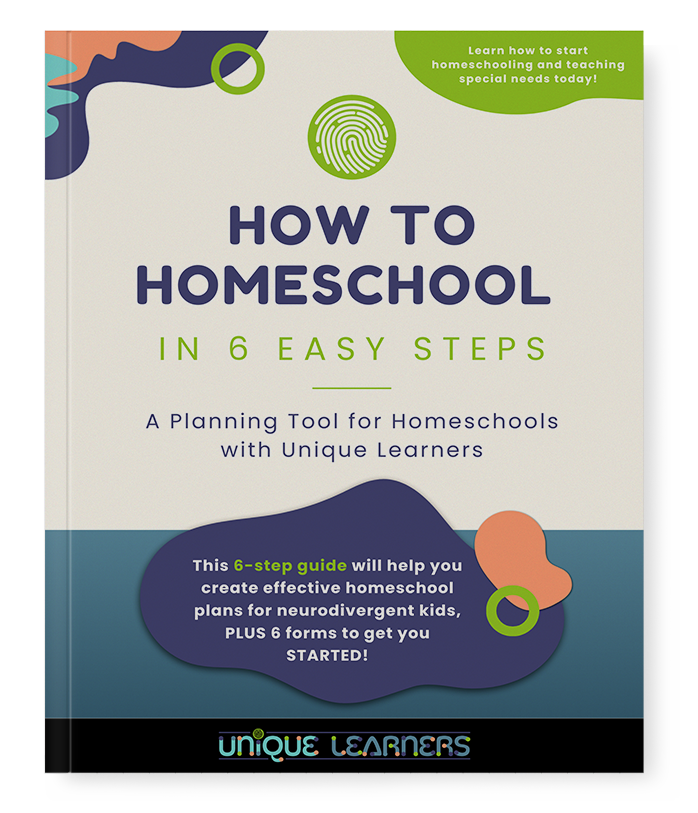When children learn the letters, they typically learn the names of the letters and then the sounds. Often in electronic toys or preschool curriculum, a variety of sound are attached to the symbols of the letters, like ant and airplane. Some letters have a name that embeds the sound with the name, like m and d. The names of other letters are not at all associated with the sound, like h and w. The inconsistencies of both the language and the presentation can make learning letters a daunting task for kids who are not quite ready developmentally to learn to read. For most kids, especially unique learners, it is way more important to learn the sounds that go with the letters than it is to learn the names. This is called sound-symbol correspondence, and it is necessary for kids to learn to read and spell words.
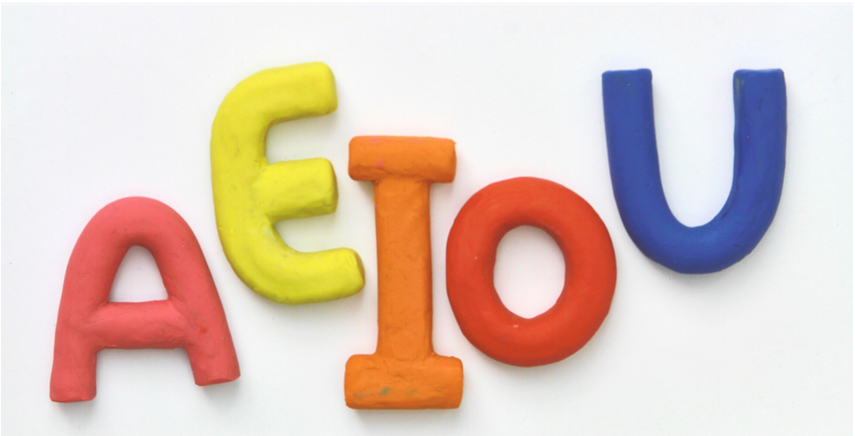
But what if a child hasn’t learned the letter sounds by age 5 or 6 or to read by age 8?
First, don’t freak out and get worried because the answer to that is rather complicated. Most neurotypical kids are ready to learn to read between age 4 and 6. However, a lot of kids emerge into reading between ages 7 and 9. The struggle could still just be a developmental issue since the human visual system is not fully developed until around age 9 or 10. Auditory processing skills continue to mature and aren’t fully developed until around age 14! Yet, there are plenty of ways to teach a child who appears to need specialized instruction. When a child avoids or struggles in learning to read, there are usually some signs of a neurodevelopmental problem, like dyslexia, are:
- writing with letter reversals
- mispronouncing words, like “volcano” vs “bolcano”
- confusing words like “anniversary” vs “university”
- difficulty with articulation or putting sentences in a correct grammatical sequence
- difficulty learning letter sounds, especially the vowels
- difficulty associating capital letters with its lowercase match
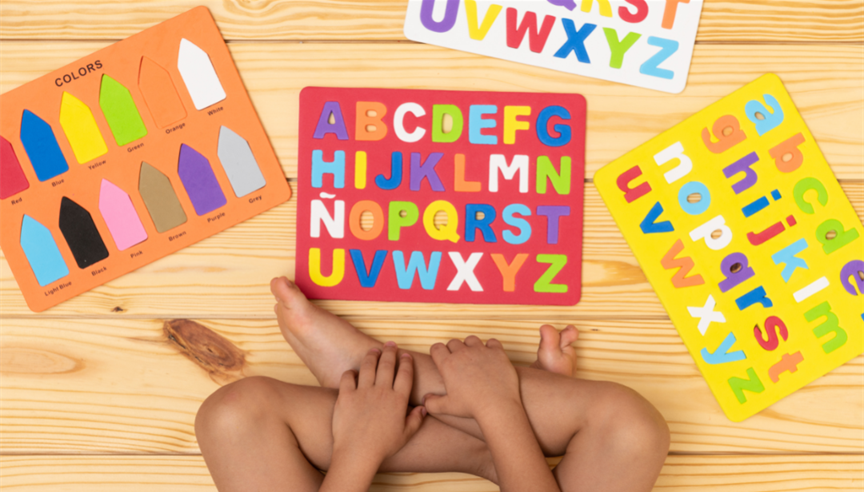
If you have an extended family history of dyslexia or your child’s speech development is delays or difficult, the signs of a reading disability can sometimes be seen as early as age 4. Starting to teach reading earlier than a child is developmentally ready can backfire by frustrating a child who is simply not ready. A better early intervention is phonemic awareness through lots of talking, teaching vocabulary, gently correcting pronunciation, and lot of playing with words. Sometimes rhyming can be very difficult for a child with language-based disorders, so be patient and keep it fun!

When teaching phonics, why is it so important to focus on vowels?
By age 6, it is possible to introduce the sounds of letters individually and in an intentional sequence for remembering the symbol and the sound. Focusing on the short vowel sounds with multisensory techniques can help a child learn to read more easily. Here are the reasons to teach vowels systematically and with many different input senses:
1. Every word in English must have at least one vowel. Each syllable must also have a vowel.
When teaching phonics, I like to use a Build-a-Word frame that color-codes letters to distinguish vowels and consonants. I encourage students to listen for the vowel sound first. Then they build the word on a magnetic board by identifying how many sounds they hear and move cards to indicate where the consonants and vowels are in the word.
2. Vowels are more difficult sounds to learn than consonants.
Systematic phonics programs nearly all have a “clue word” associated with each letter that helps a student to associate the sound. On the magnetic Build-a-Word board, I keep the vowels separated from the consonants. I teach the vowels and consonants separately unless we are practicing alphabetical order. I typically have them chant the vowels from the program we are using. Note: Sounds are written between lines. Here is how we do the chanting practice:
/ă/ in Apple… /ă/, /ă/, /ă/ or Allie Alligator… /ă/, /ă/, /ă/
In other languages, vowels often have only one sound, and each vowel is sounded with a similar pronunciation from word to word, making both decoding and spelling more consistent. In contrast, American English is a language combining words from many other languages, slang words, acronyms, and technical words that have emerged due to constantly changing technology.
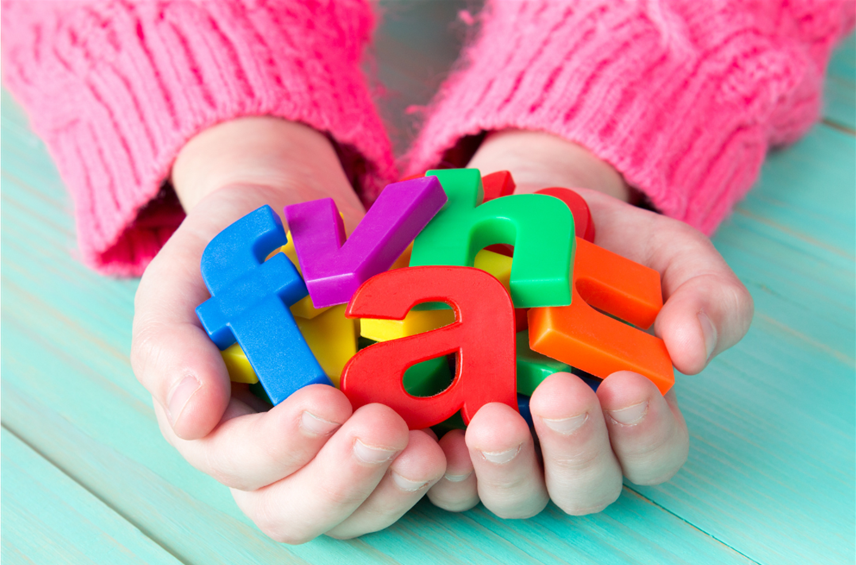
3. Vowels are difficult to distinguish from each other.
For young children, the sounds of consonant letters tend to be easier to learn than the vowels because each vowel can represent several sounds. There are also multiple spellings for vowel sounds, like ai, ay, ey, and eigh. Homophones complicate spelling and make memorizing meaning of vocabulary even more difficult.
Kids with dyslexia, autism, or any other language-based disorder frequently mispronounce vowel sounds and often have difficulty with spelling. A focus on short vowels, silent e, and r-controlled vowels for spelling before introducing vowel digraphs (ai, ea, oa, etc) can help students learn to read and spell more words without frustration.
To help kids discriminate the difference in vowel sounds, I provide a hand cuing system that also serves as nonverbal correction when a student is having difficulty process a correct vowel sound. You can use a hand cuing system in your phonics program, like the ones in Zoo Phonics. The Lindamood-Bell LiPS program uses cuing based on speech therapy articulation exercises. Often phonics programs for older students don’t incorporate a hand cuing system. I use multisensory teaching strategies as much as possible with all ages where we see the letter and clue word, hear the sound and clue word, and make the motion that cues that sound. I hope to make a video soon showing how I do the hand cuing for short vowels, or you can make up your own.
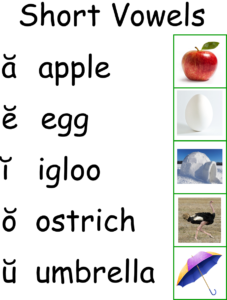
My hand cues for the short vowels are:
Pretend you are holding an apple in your hand. Bring it to your mouth and try to put the whole apple in your mouth. Say, “ /ă/ Apple… /ă/, /ă/, /ă/”
Pretend you are picking up an egg between your thumb and first finger. Bring it to your mouth and try to put the whole egg in your mouth. The corners of your mouth pull back. Say, “/ĕ/ Egg… /ĕ/, /ĕ/, /ĕ/”
Gently push your finger up on the tip of your nose like a bunny. Wrinkle up your nose at the same time. Say, “/ĭ/ Ishy… /ĭ/, /ĭ/, /ĭ/
Make your mouth into a big O shape. Make your pointer finger go around your mouth in the O shape. Say, “/ŏ/ Ostrich… /ŏ/, /ŏ/, /ŏ/
I have 2 different cues for short u depending on how easily the student has learned the other vowels. For most students, I have
Cross your arms at the elbows to form a big U shape with your arms. Pull in the lower part of the arms to the belly and grunt like you have a tummy ache. Say, “/ŭ/ Umbrella…/ŭ/, /ŭ/, /ŭ/
When a student reads or spells “pit” as “pet” or “bond” as “band,” usually all I need to do is say the word again and show the hand cue. Of course, some students have much more significant auditory processing problems that are best taught through a computer-based cognitive training program that strengthens the auditory processing skills necessary for the brain to discriminate sounds and blend them together.
4. Vowels in English have inconsistent spellings; although there are enough patterns to make it worth teaching phonics.
Phonics programs used in general education classrooms, whether in public, private, or home schools, typically present too many phonics rules together too quickly for students with language-based learning problems. Orton-Gillingham is a methodology that presents phonics rules systematically and individually. Spelling uses multisensory activities. Reading uses controlled vocabulary in patterns to practice words in isolation, sentences, and stories. Teaching words by word families or rhyming words can help to cement and connect phonemic awareness skills to reading tasks.

5. Short vowels have the most consistent sounds and extend to multisyllable words.
The rule for short vowels is when one vowel is in the beginning or middle of a syllable with a consonant or consonant digraph (ch, sh, th, wh) at the end, the vowel will say its short sound. My rule for kids:
“When a vowel is closed by a consonant door, it says its short sound.”
In multisyllable words, almost half of all the syllables are closed! That means the short vowels are very common and useful in teaching longer words. I try to introduce how to split closed syllables as soon as a student can grasp the idea of the final consonant door.
6. Students with language-based disorders make faster progress when taught phonics with a special sequence of the vowels.
You now know how important the short vowels are in helping a struggling reader to gain some momentum. Short vowels are not enough, though, to build a competent reader. Once the short vowels and consonants are mastered, and closed syllables are introduced, then more vowel rules can be added.
Here is the sequence I typically follow for my students:
- One-syllable Short Vowels in Word Families
- One-syllable Short Vowel with Special Ending Spelling: Fizzle Letters (f, s, z, l), ck, dge, and tch
- Introduce Closed Syllables
- Consonant Blends
- Consonant Digraphs
- Trible Blends
- Silent e Words with Long Vowels
- One-syllable R-Controlled Vowels
- Vowel Diphthongs – (Sometimes)
- 6 Syllable Types – CLOVER
- More Closed Syllables
- Open Syllables with Long Vowels
- Silent e Syllables
- R-Controlled Syllables
- -Cle Syllables
- Vowel Combinations – Digraphs
- Vowel Combinations – Diphthongs
My students tend to make much faster progress and can read more stories than when they have too many rules to keep track of. I may introduce vowel diphthongs individually if or when a student may encounter a word with oo, ow, oy, etc. If needed, vowel diphthongs in one-syllable words are inserted into the sequence after the one-syllable R-Controlled Vowels.
If you aren’t familiar with the terminology of phonics, watch for our series of Unique Learners Phonics Decoding and Spelling Curriculum to be released sometime this fall that will explain the terms and rules as you teach your student to read and spell. In the meantime, there are lots of phonics programs based on the Orton-Gillingham method that can help your unique learner to read and spell. If you have questions about a best fit of a phonics program for your child, feel free to message Sue Hegg at sueh@uniquelearners-suehegg.com.
